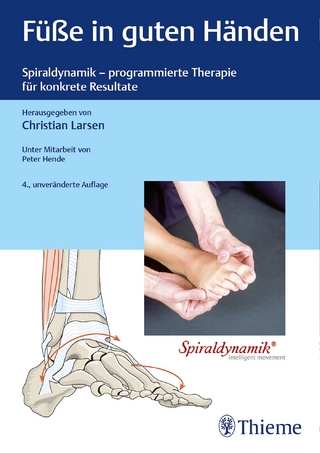
Significant and Nonsignificant Risk Medical Devices
Springer International Publishing (Verlag)
978-3-031-52837-8 (ISBN)
Significant and Non-Significant Risk Medical Devices is designed to assist practicing engineers, academic researchers, and clinical investigators in navigating the complex regulatory environment associated with medical device research and development.
Prakash Srinivasan Timiri Shanmugam, Ph.D., ERT, is currently a senior toxicologist at Avanos Medical, Inc. Before Avanos Medical, he was a subject matter expert in biocompatibility at Baxter International, Inc. and Johnson & Johnson. Dr. Timiri Shanmugam has an MS and a Ph.D. in the specialization of Pharmacology and Toxicology with Chemistry (interdisciplinary) from the University of Madras and completed his postdoctoral research at Tulane University and LSU Health Shreveport, Louisiana. He is the editor of five books, including the Medical Device Guidelines and Regulations Handbook (Springer, 2022), and the author of several book chapters. He has published research articles in various peer-reviewed international journals and conference proceedings/abstracts.
Thangaraju Pugazhenthan, MBBS, MD, DNB, MNAMS, PG.Diploma in Diabetology, is an assistant professor in the Department of Pharmacology at All India Institute of Medical Sciences (AIIMS), Raipur. Additionally he hold the Master of Business Administration, MBA (Hospital management). He previously worked in Central Health Services at the Central Leprosy Teaching and Research Institute. He received an MBBS from Madurai Medical College and did his post-graduate training at the Post Graduate Institute of Medical Education and Research (PGIMER), Chandigarh. He is the member of world association of medical editors (WAME). He has published more than 140 internationally indexed publications, including in The Lancet and The BMJ. He is co-editor of the book Medical Device Guidelines and Regulations Handbook (Springer, 2022), author of the books Newer Pharmacological Concepts of Managing Erythema Nodosum Leprosum (Lambert, 2017) and A Pharmacological Guide to Non-Steroidal Anti-Inflammatory Medications (Nova Science Publishers, 2021), and a contributing chapter author for the books Ophthalmology and Otorhinolaryngology in Toxicological Aspects of Medical Device Implants (Elsevier, 2020) and Leprosy: From Diagnosis to Treatment (Nova Science Publishers, 2020). He is the youngest to be elected as Fellow of Royal college of Physician, FRCP (London). He is also the Fellow of international medical sciences academy, (FIMSA).
Thamizharasan Sampath, PhD, is currently Dean Research and Professor of Pharmacology & Toxicology at University of Health Sciences (SBIMS), Raipur, CG, India. He has done MS and PhD specializing in pharmacology under faculty of Medicine from Post Graduate Institute of Basic Medical Sciences, University of Madras and also did his Post graduate diploma in Clinical Research from State University. He has 17 years of teaching and research experience. His Research area includes cancer pharmacology, clinical research, neurotoxicology, nutraceuticals, Reproductive toxicology, endocrine pharmacology, Phyto pharmacology, molecular pharmacology, drug design and drug discovery. He has published more than 70 research articles in national and international indexed Journals. He is co-editor of the books Medical Device Guidelines and Regulations Handbook(springer), Biocompatibility Protocols for Medical Devices and Materials(Elsevier) and author of the book 'Bamboo-The Golden seed' and also contributed more than 20 book chapters. He has received many awards from various central organizations for his outstanding Research and contribution in the field of Medicine. He serves as chief Editor, Editorial board member and Reviewer in many medical journals. Member in Institutional Research Ethics committee, Animal ethics committee, Indian Pharmacological Society and also member of UNESCO Bioethics committee.
Dr Indumathy Jagadeeswaran, PhD, is currently working as a Senior Research Associate with the Department of Pediatrics at UT Southwestern Medical Center, Dallas, Texas. She has been working in th
Chapter 1. INTRODUCTION.- Chapter 2. GENERAL MEDICAL USE.- Chapter 3. ANAESTHESIOLOGY.- Chapter 4. SIGNIFICANT AND NONSIGNIFICANT RISK CARDIOVASCULAR DEVICES.- Chapter 5. Significant Risk Dental Devices.- Chapter 6. Significant Risk Medical Devices- ENT (Ear, Nose & Throat).- Chapter 7. Advantages and Disadvantages of Gastroenterology and Urology Implants .- Chapter 8. Significant and non-significant risks of General and Plastic Surgery devices.- Chapter 9. General Hospital Devices.- Chapter 10. SIGNIFICANT RISK MEDICAL DEVICES NEUROLOGY.- Chapter 11. OBSTETRICS AND GYNECOLOGY INSTRUMENTS.- Chapter 12. Medical Devices-Ophthalmic Devices.- Chapter 13. ORTHOPEDICS.- Chapter 14. RADIOLOGY.- Chapter 15. Non Significant Risk Medical Devices.
| Erscheinungsdatum | 03.08.2024 |
|---|---|
| Zusatzinfo | VIII, 433 p. 87 illus., 66 illus. in color. |
| Verlagsort | Cham |
| Sprache | englisch |
| Maße | 155 x 235 mm |
| Themenwelt | Medizin / Pharmazie ► Physiotherapie / Ergotherapie ► Orthopädie |
| Technik | |
| Schlagworte | biomedical research • clinical research • Food and Drug Administration (FDA) • IDE 21 CFR 812 • IDE 21 CFR 812.2(b) • Institutional Review Boards (IRB) • Investigational Device Exemptions (IDE) • Medical and Health Technologies • Medical Device Design • medical device industry • medical device standards • Nonsignificant Risk Device (NSR) • Significant Risk Device (SR) |
| ISBN-10 | 3-031-52837-9 / 3031528379 |
| ISBN-13 | 978-3-031-52837-8 / 9783031528378 |
| Zustand | Neuware |
| Informationen gemäß Produktsicherheitsverordnung (GPSR) | |
| Haben Sie eine Frage zum Produkt? |
aus dem Bereich


